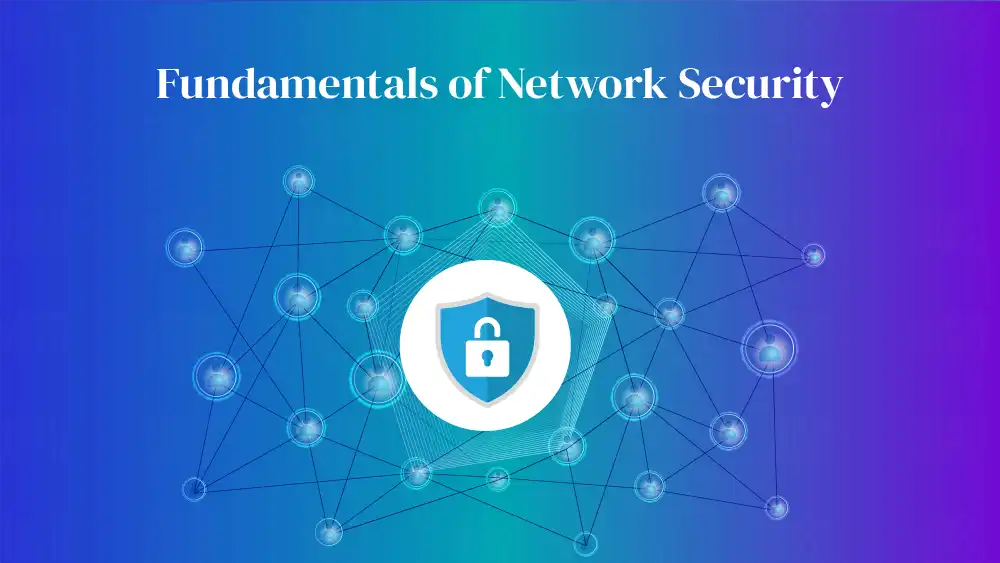In an interconnected world, network security plays a vital role in safeguarding sensitive information and preventing unauthorized access. This blog post will delve into the fundamentals of network security, covering key components such as firewalls, intrusion detection systems (IDS), and virtual private networks (VPNs). By understanding these crucial elements, you can bolster your network’s defenses against cyber threats and maintain a secure digital environment.
Understanding Network Security
In today’s interconnected world, network security is vital for protecting sensitive data and maintaining the integrity of digital infrastructure. In this blog post, we will explore the fundamentals of network security, its significance in the digital landscape, and the potential consequences of network breaches.
Network security refers to the measures taken to safeguard networks and their data from unauthorized access, attacks, and disruptions. It involves implementing policies, technologies, and practices to ensure the confidentiality, integrity, and availability of network resources.
In our increasingly digital environment, the risks of network breaches are ever-present. Unauthorized access to networks can lead to data breaches, financial losses, damage to reputation, and legal implications. Implementing robust network security measures is crucial to protect against these risks and ensure the smooth operation of digital systems.
By adopting network security measures, organizations can control access to their networks, encrypt sensitive data, detect and prevent intrusions, and mitigate the impact of potential attacks. It enables businesses to maintain trust with their customers, comply with regulatory requirements, and safeguard critical information from cyber threats.
In Conclusion, Network security is a critical aspect of protecting digital infrastructure and sensitive data. Understanding its importance and the potential consequences of network breaches is essential for individuals and organizations. By implementing robust network security measures, businesses can mitigate risks, protect valuable information, and maintain the trust of their stakeholders.
Firewall Protection: Building a Secure Network Perimeter
Firewalls play a vital role in network security by establishing a barrier between internal networks and external threats. In this blog post, we will explore the fundamentals of firewall protection, its different types, and how it safeguards network perimeters from unauthorized access.
A firewall acts as a gatekeeper for network traffic, monitoring and controlling the flow of data between networks based on predetermined security rules. It examines incoming and outgoing traffic packets, filtering them based on parameters such as IP addresses, ports, and protocols.
There are several types of firewalls, including network-level, application-level, and next-generation firewalls. Network-level firewalls operate at the network layer (Layer 3) of the OSI model and can filter traffic based on source and destination IP addresses. Application-level firewalls, also known as proxy firewalls, work at the application layer (Layer 7) and can inspect data packets to ensure they comply with specific application protocols.
Next-generation firewalls combine the features of network-level and application-level firewalls while incorporating additional capabilities such as intrusion prevention, deep packet inspection, and user-based controls. These advanced firewalls provide enhanced security and greater visibility into network traffic.
By deploying firewalls, organizations can establish a secure network perimeter, preventing unauthorized access and protecting against external threats such as unauthorized access attempts, malware, and network-based attacks. Firewalls serve as an essential component of network security, providing a first line of defense against potential intrusions.
In Conclusion, Firewall protection is crucial for building a secure network perimeter. By implementing firewalls, organizations can monitor and control network traffic, filtering out potential threats and unauthorized access attempts. Understanding the different types of firewalls and their capabilities is essential for organizations to establish robust network security and safeguard their digital assets.
Enhancing Network Security with Intrusion Detection Systems
Intrusion Detection Systems (IDS) play a vital role in network security by actively monitoring network traffic for potential security breaches. In this blog post, we will explore the fundamentals of IDS, its different types, and how it contributes to the overall protection of your network.
An Intrusion Detection System (IDS) is a network security tool that detects and alerts administrators about suspicious activities or potential security breaches within a network. IDS works by analyzing network traffic, looking for patterns, anomalies, or known signatures of attacks.
There are two main types of IDS: host-based IDS (HIDS) and network-based IDS (NIDS). HIDS monitors activities on individual hosts or devices within the network, analyzing system logs, file integrity, and user activities. NIDS, on the other hand, monitors network traffic, analyzing packets to identify potential threats and suspicious behavior.
Intrusion Detection Systems can be further classified into signature-based and behavior-based systems. Signature-based IDS relies on a database of known attack patterns or signatures to identify threats. Behavior-based IDS, also known as anomaly detection, looks for deviations from normal network behavior to identify potential attacks that may not have a known signature.
By deploying IDS, organizations can proactively detect and respond to potential security breaches. IDS provides real-time alerts, enabling administrators to take immediate action, investigate incidents, and implement appropriate countermeasures. It helps in minimizing the impact of attacks, preventing data breaches, and maintaining network integrity.
In Conclusion, Intrusion Detection Systems are essential components of network security, actively monitoring network traffic to identify potential security breaches. By deploying IDS, organizations can enhance their network security posture, detect and respond to attacks in a timely manner, and safeguard their digital assets. Understanding the different types of IDS and their capabilities is crucial for organizations seeking to fortify their network defenses.
Secure Communication: Exploring the Benefits of Virtual Private Networks (VPNs)
In an era of remote work and the need for secure communication, Virtual Private Networks (VPNs) have become increasingly important. In this blog post, we will explore the fundamentals of VPNs, their benefits, and how they establish secure connections to protect sensitive information.
A Virtual Private Network (VPN) creates a secure, encrypted connection over a public network, such as the internet. It enables users to access private networks securely, even when connected to an untrusted or potentially insecure network.
VPNs provide several benefits for network security and data privacy:
Confidentiality: By encrypting data traffic, VPNs ensure that information transmitted over the network remains confidential and protected from eavesdropping or interception by unauthorized parties.
Data Integrity: VPNs use cryptographic protocols to verify the integrity of data, ensuring that it remains unchanged during transmission. This protects against tampering and unauthorized modifications.
Authentication: VPNs often require user authentication, ensuring that only authorized individuals can access the private network. This helps prevent unauthorized access and protects against potential breaches.
Bypassing Geo-Restrictions: VPNs can allow users to bypass geographical restrictions and access resources or content that may be restricted in their location. This can be particularly useful for remote workers or individuals traveling abroad.
VPNs have become essential tools for remote workforces, providing secure access to company resources and protecting sensitive data. They are also valuable for individuals concerned about online privacy, as VPNs mask their IP addresses and help maintain anonymity while browsing the internet.
In Conclusion, Virtual Private Networks (VPNs) offer secure and private communication over public networks. By encrypting data traffic, ensuring data integrity, and providing user authentication, VPNs protect sensitive information and establish secure connections. Understanding the benefits of VPNs and their role in network security is crucial for individuals and organizations seeking to maintain privacy, access resources securely, and protect valuable data.
Strengthening Network Security: Best Practices for a Resilient Infrastructure
In addition to understanding the fundamental components of network security, implementing best practices is essential for maintaining a strong and resilient infrastructure. In this blog post, we will discuss key best practices that can enhance your network security posture and mitigate the risks of potential cyber threats.
Regular Software Updates: Keep your network devices, operating systems, and applications up to date with the latest security patches. Regular updates help address vulnerabilities that attackers can exploit to gain unauthorized access to your network.
Strong Password Policies: Enforce strong password policies across your network. Encourage users to create complex passwords that include a combination of letters, numbers, and special characters. Additionally, consider implementing multi-factor authentication (MFA) for an added layer of security.
Network Segmentation: Divide your network into segments or subnets to limit the impact of potential breaches. By segregating sensitive data and resources, you can contain any unauthorized access or malicious activities, minimizing the potential damage to your entire network.
Employee Education and Awareness: Educate your employees about the importance of network security, safe browsing practices, and how to recognize and report potential threats such as phishing attacks. Conduct regular training sessions and provide ongoing awareness programs to keep security practices top of mind.
Access Controls and Privilege Management: Implement proper access controls to ensure that users have appropriate permissions based on their roles and responsibilities. Regularly review and update user access privileges to minimize the risk of unauthorized access.
Network Monitoring and Incident Response: Deploy robust network monitoring tools to continuously monitor network traffic and detect any abnormal activities. Establish an incident response plan that outlines the steps to be taken in the event of a security incident, ensuring a prompt and effective response.
Regular Backups: Perform regular backups of critical data and store them securely. In the event of a network breach or data loss, having up-to-date backups ensures that you can restore your systems and data with minimal disruption.
In Conclusion, Implementing best practices for network security is crucial for organizations to establish a strong defense against cyber threats. By staying up to date with software updates, enforcing strong password policies, segmenting networks, educating employees, implementing access controls, monitoring network traffic, and maintaining backups, you can enhance your network security posture and mitigate potential risks. Proactive measures and a comprehensive approach to network security are key to maintaining a resilient infrastructure in today’s evolving threat landscape.
Final Thoughts:
Network security is a multifaceted discipline that requires a combination of technological solutions, best practices, and user awareness. By understanding the fundamentals of network security, implementing robust measures such as firewalls, intrusion detection systems, and virtual private networks, and following best practices, individuals and organizations can significantly strengthen their network security posture. Stay vigilant, adapt to emerging threats, and prioritize network security to protect your sensitive data, preserve the integrity of your digital infrastructure, and maintain a safe and secure network environment.











